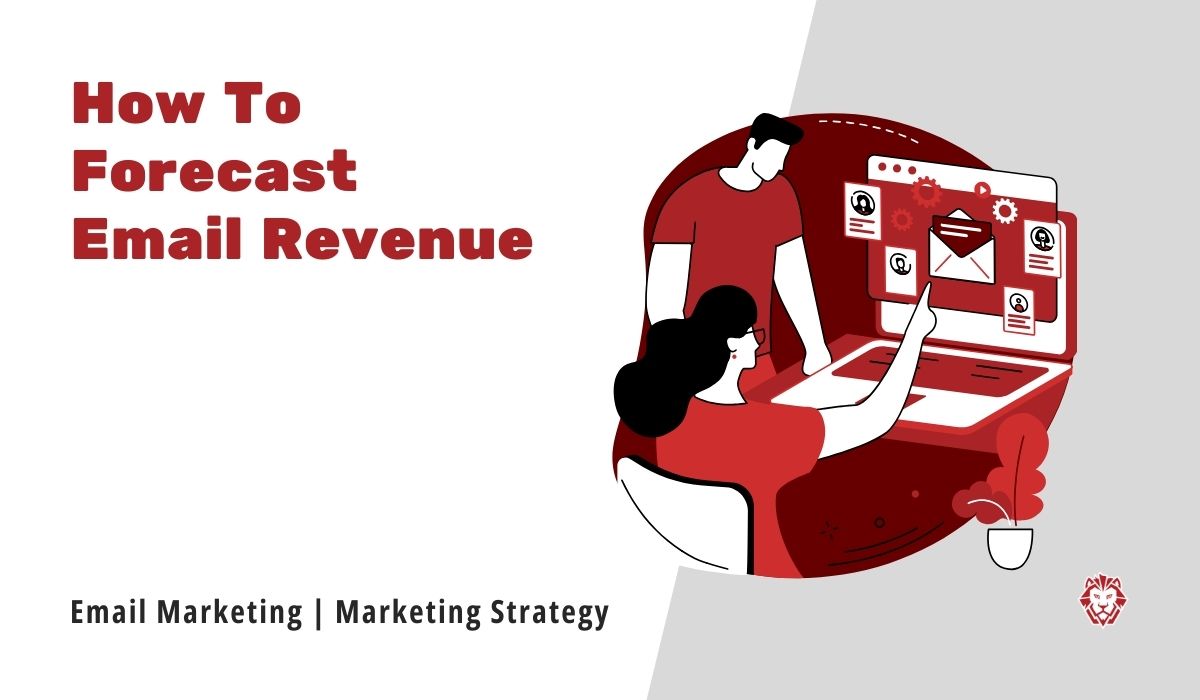
How To Forecast Email Revenue
How To Forecast Email Revenue
Unlock the secrets to accurately forecast your email revenue with this comprehensive guide.
In the digital age, email marketing has become an integral part of business strategies. It not only helps to build brand awareness but also generates revenue. However, to maximize the potential of email marketing, it is essential to forecast email revenue accurately. By understanding the basics, analyzing key factors, and utilizing tools and techniques, businesses can gain valuable insights into their email revenue potential. In this article, we will explore the process of forecasting email revenue and address potential challenges that may arise.
TL;DR
Email marketing is crucial for businesses, providing a direct and personalized communication channel that generates revenue. Forecasting email revenue involves understanding basics like conversion rates and average order value, considering key factors such as list size and engagement rates, and using tools like spreadsheet models or advanced software. Accurate forecasting aids strategic planning, goal setting, and resource allocation, helping businesses optimize their email marketing efforts for maximum profitability. Challenges include data accuracy and adapting to unforeseen market changes.
Understanding the Basics of Email Revenue
Before diving into the intricacies of forecasting email revenue, it is crucial to define the concept. Email revenue refers to the income generated through email marketing activities, such as product promotions, lead nurturing campaigns, and personalized offers. By identifying the revenue associated with specific email campaigns and customer segments, businesses can make informed decisions regarding resource allocation and marketing strategies.
Email marketing has become an essential tool for businesses to connect with their target audience. It allows companies to reach customers directly in their inboxes, providing a personalized and targeted approach. This direct communication channel has proven to be highly effective in driving sales and generating revenue.
Defining Email Revenue
Email revenue encompasses not only direct sales resulting from email campaigns but also the value derived from customer engagement and retention. It takes into account metrics such as conversion rates, average order value, and customer lifetime value. By quantifying the financial impact of email marketing efforts, businesses can gauge the effectiveness of their campaigns and optimize their strategies accordingly.
Conversion rates indicate the percentage of recipients who take the desired action after receiving an email, such as making a purchase or signing up for a newsletter. Average order value measures the average amount spent by customers in a single transaction, providing insights into the purchasing behavior of email recipients. Customer lifetime value, on the other hand, represents the total revenue generated by a customer over their entire relationship with a business. These metrics help businesses understand the true value of email marketing beyond immediate sales.
Importance of Forecasting Email Revenue
Forecasting email revenue plays a vital role in strategic planning and resource allocation. It enables businesses to set realistic goals, allocate budgets effectively, and optimize their marketing efforts. By accurately predicting future revenue trends, businesses can make data-driven decisions and ensure a positive return on investment.
Effective forecasting requires a deep understanding of various factors that influence email revenue. These factors may include seasonality, industry trends, customer behavior, and the overall economic climate. By analyzing historical data and considering these factors, businesses can develop accurate revenue projections that guide their marketing strategies.
Furthermore, forecasting email revenue allows businesses to identify potential bottlenecks or areas of improvement in their email marketing campaigns. By analyzing the performance of different campaigns and customer segments, businesses can identify opportunities for optimization and refinement. This iterative approach ensures continuous improvement and maximizes the revenue potential of email marketing efforts.
In conclusion, email revenue is a comprehensive measure of the financial impact of email marketing activities. By understanding the various components of email revenue and accurately forecasting its future trends, businesses can make informed decisions and optimize their marketing strategies for maximum profitability.
Key Factors Influencing Email Revenue
Several factors contribute to the success of email marketing campaigns and ultimately impact revenue generation. Understanding these factors is crucial for accurate revenue forecasting.
Email List Size and Quality
The size and quality of an email list directly affect the revenue potential. A larger list provides a broader reach, increasing the chances of conversions. However, the quality of the list is equally important. A list with engaged and interested subscribers is more likely to generate revenue compared to a larger but less engaged list. Therefore, businesses must focus on growing their email list organically and maintaining high-quality subscribers.
Building an email list organically involves various strategies. One effective method is to offer valuable content or incentives in exchange for email addresses. This approach ensures that subscribers are genuinely interested in the business and its offerings. Additionally, businesses can optimize their website and landing pages to encourage visitors to sign up for their email list.
Once an email list is established, it is crucial to maintain its quality. Regularly cleaning the list by removing inactive or unengaged subscribers helps improve deliverability and ensures that the messages reach the target audience. Implementing double opt-in processes can also help verify the authenticity of subscribers and reduce the chances of spam complaints.
Email Engagement Rates
Email engagement rates, including open rates, click-through rates, and conversion rates, are indicators of subscriber interest and interaction with email campaigns. Higher engagement rates often translate into increased revenue. Monitoring and analyzing these rates allow businesses to identify successful campaigns and optimize future strategies.
Improving email engagement rates requires a deep understanding of the target audience and their preferences. Personalizing email content based on subscriber data, such as demographics, past purchases, or browsing behavior, can significantly enhance engagement. Segmenting the email list and tailoring messages to specific groups with relevant content and offers also increases the likelihood of engagement.
In addition to content personalization, optimizing email design and layout for different devices and email clients can improve engagement rates. Ensuring that emails are mobile-friendly and visually appealing enhances the user experience and encourages recipients to take action.
Conversion Rates
The conversion rate measures the percentage of subscribers who take the desired action, such as making a purchase or filling out a form. A higher conversion rate indicates a higher revenue potential. Analyzing conversion rates for different segments and campaigns helps businesses identify areas for improvement and refine their email marketing strategies.
There are several strategies businesses can employ to increase conversion rates. One effective approach is to create compelling and persuasive email content that clearly communicates the value proposition and encourages recipients to take action. Including strong and enticing call-to-action buttons or links can guide subscribers towards the desired conversion.
Testing different elements of the email, such as subject lines, email copy, and visuals, can also help identify what resonates best with the target audience and drives higher conversion rates. A/B testing allows businesses to compare different versions of an email and determine which performs better in terms of conversions.
Furthermore, optimizing the landing pages or destination URLs that subscribers are directed to after clicking on an email link can significantly impact conversion rates. Ensuring that the landing page aligns with the email content and provides a seamless user experience increases the chances of conversion.
Steps to Forecast Email Revenue
Forecasting email revenue requires a systematic approach that includes gathering relevant data, analyzing past performance, and predicting future trends.
Gathering Relevant Data
The first step in the forecasting process is to gather relevant data. This includes historical revenue data, email campaign performance metrics, and customer segmentation data. The more data available, the more accurate the forecast will be. Data can be collected from email service providers, customer relationship management systems, and other relevant sources.
Analyzing Past Performance
Once the data is collected, it is essential to analyze past performance to identify trends and patterns. This analysis can provide insights into the revenue generated by different campaigns, segments, and customer behaviors. By understanding past performance, businesses can make informed decisions about future strategies and revenue expectations.
Predicting Future Trends
Based on the analysis of past performance, businesses can predict future revenue trends. This involves considering factors such as market trends, seasonality, and changes in customer behavior. Utilizing statistical models and forecasting techniques can help derive accurate predictions and prepare for potential revenue fluctuations.
Tools and Techniques for Email Revenue Forecasting
Various tools and techniques are available to assist businesses in forecasting email revenue.
Spreadsheet Models for Forecasting
Spreadsheet models, such as Microsoft Excel, are commonly used for revenue forecasting. These models allow businesses to input historical data, apply forecasting formulas, and analyze the results. Spreadsheet models provide a cost-effective solution for small to medium-sized businesses looking to forecast email revenue.
Advanced Forecasting Software
For larger businesses with more complex forecasting needs, advanced forecasting software can be employed. Such software utilizes advanced algorithms and data analysis techniques to produce accurate revenue forecasts. These tools often integrate with email service providers and customer relationship management systems, making data collection and analysis seamless.
Potential Challenges in Email Revenue Forecasting
While forecasting email revenue offers numerous benefits, certain challenges may arise during the process.
Data Accuracy Issues
Data accuracy is crucial for reliable revenue forecasting. Inaccurate or incomplete data can lead to erroneous predictions and skewed results. It is important to ensure data integrity by regularly updating and validating the data being used for forecasting.
Unforeseen Market Changes
Market dynamics can change rapidly, impacting revenue potential. Shifts in consumer behavior, competitive landscape, or industry trends can influence the effectiveness of email marketing campaigns. Forecasting models should consider these potential market changes and be adaptable to dynamic business environments.
Accurately forecasting email revenue is an essential aspect of strategic planning and decision-making for businesses. By understanding the basics, analyzing key factors, and utilizing tools and techniques, businesses can gain valuable insights into their email revenue potential. However, it is important to be aware of potential challenges and ensure data accuracy and adaptability in forecasting models. By leveraging the power of email revenue forecasting, businesses can optimize their marketing efforts, maximize revenue generation, and achieve their business goals.
Need help with your email marketing? Connect with our team today!



